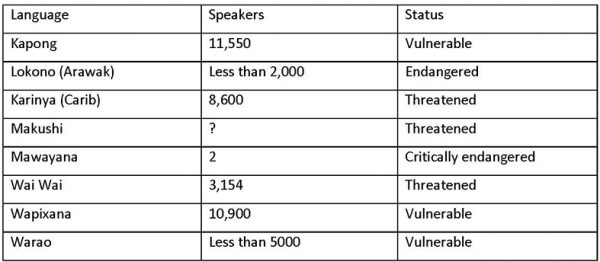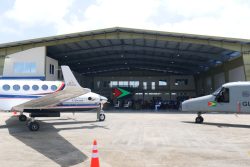Dear Editor,
In 1995, President Cheddi Jagan designated September as Amerindian Heritage Month. Over the years, this month has been used to highlight various issues relating to Amerindians.
This year, I wished that more emphasis could be placed on promoting the different Amerindian languages. In fact, many names of places in our country were names derived from these languages. At the 10th Edgar Mittelholzer Memorial Lectures, entitled “the Arawak Language in Guyanese Culture”, Father John Peter Bennett, reminded us of Arawak in everyday parlance, for example: Kumaka – is an Arawak word for the silk cotton tree or Berbice which is derived from beribeshi, the Arawak word for banana. Several words from these languages have become widely accepted in English, words such as Barbecue which comes from the Arawak word barabakwa meaning a raised platform. Canoe – comes from Kanoa and Hammock comes from hamaka which means hanging bed. These are just a few examples of how the words from the Amerindian languages have enriched other languages.
In Guyana, the value of these Amerindian languages has mostly gone unappreciated. While its use has been in steady decline, we have to decide as a modern nation not to be careless with this linguistic patrimony. As linguist Nicholas Ostler puts it language, “Once learnt in a human community, it will provide access to a vast array of knowledge and belief: assets that empower us, when we think, when we listen, when we speak, read or write, to stand on the shoulders of so much ancestral thought and feeling. Our language places us in a cultural continuum, linking us to the past, and showing our meanings also to future fellow speakers.”
Status of Amerindian languages
Currently, UNESCO has flagged these languages as critically endangered, threatened or vulnerable. This is because there has been a steady decline in the number of persons speaking the languages and in many cases, there isn’t any serious attempt to teach the languages to the current generation. Unfortunately, if this trend continues, many of these languages will be lost to humanity.
What can be done?
To prevent this national tragedy of disappearing Amerindian languages we need to be proactive and take urgent steps on how to sustain, and propagate these languages. The Government of Guyana must have a clearly articulated policy and must set aside the resources to ensure that the policies and programmes are implemented correctly in the various communities. For some time now, I have been advocating for the creation of an Amerindian Language Institute, staffed with linguists, who can conduct research, develop teaching material and use it to teach the languages to the various communities. I am sure there are many other ideas on how to prevent these languages from disappearing. Our Amerindian leaders, academia, civil society and government must have an urgent national conversation on what can and should be done for the promotion of these languages. As we celebrate the Amerindian Heritage month one of the best ways to do so, is to take concrete steps to promote the linguistic heritage of our Amerindian communities.
Happy Amerindian Heritage month!
Yours faithfully,
Dr Frank Anthony
PPP/C MP









